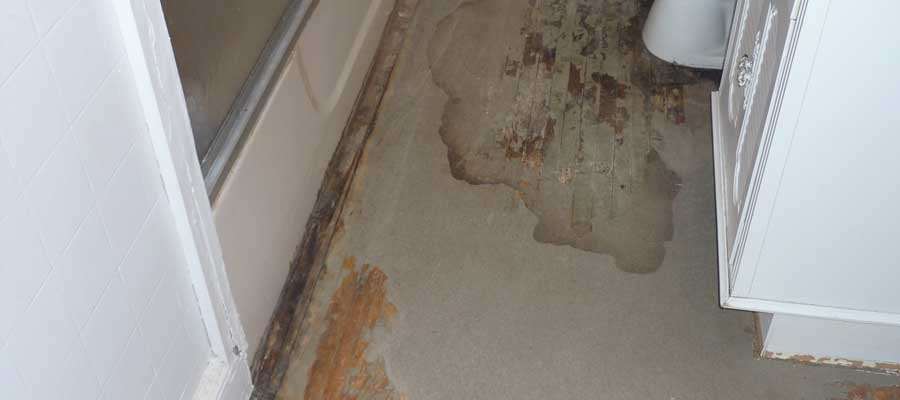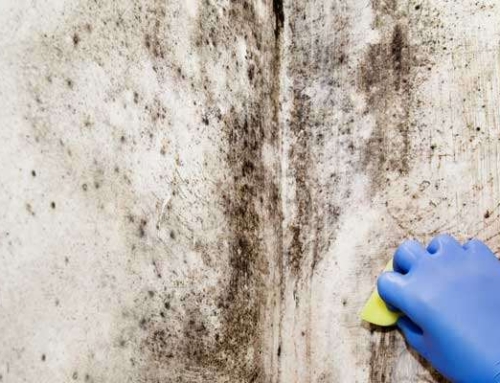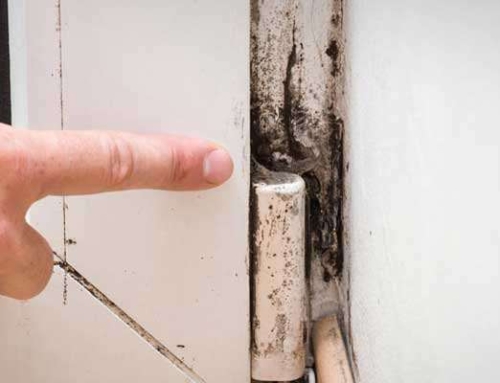Mold is insidious. It is capable of growing on practically any surface and can quickly spread if it isn’t treated right away. Even worse, it can negatively impact your health, both through long-term exposure and through improper cleaning techniques.
DIY mold removal is usually safe for areas that are smaller than 9 square feet. Keep in mind, however, that every type of mold has the potential to harm your health. Mold spores can trigger allergies. They also can cause conditions like sinusitis, bronchitis, and respiratory tract infections. Asthma sufferers often react more strongly to mold, as do people with poor immunity, conditions that affect their lungs, or certain other health problems. If you have any issues with your health or if the area affected by the mold is bigger than 9 square feet, you should hire a company to handle the cleanup for you. You should also consider hiring a professional to handle the problem if you are unwilling or unable to follow the steps below during the cleanup process.
DIY Mold Removal Tips
1. Identify the source of the mold. For mold to grow, three basic requirements need to be met: the room has to be the right temperature, there needs to be moisture present, and there has to be a source of nutrition such as fabric, paper, drywall, or wood. The first step in getting rid of the mold is to eliminate any sources of moisture in the affected area. This will help keep the mold from coming back in the future.
2. Properly protect yourself. When you disturb the mold, it releases spores into the air. These airborne mold spores can irritate allergies and can cause problems like coughing. To minimize the risk, put on protective gloves and goggles. To avoid breathing in mold spores, wear an N95 respirator. The EPA has a list of essential protective gear for cleaning up mold on their website.
3. Make sure your HVAC system is not affected. Inspect your HVAC system to ensure that there is no mold in the vicinity of the air intake. If your HVAC system does have mold in it, avoid running it. Otherwise, the mold spores could spread through your whole house.
4. Check places where mold could be hiding. Mold often hides in out-of-the-way places. For instance, you can sometimes find it behind pictures hanging on the wall, beneath wallpaper, inside your air ducts, under carpeting, or behind pieces of furniture. Carefully inspect any areas where moisture may be present to verify that their isn’t any mold growth.
5. Get rid of items that have been exposed to moisture. Any porous items that are exposed to moisture for longer than 48 hours should be disposed of. Seal them in trash bags to keep the mold spores from spreading. Items that fall into this category include drywall, wallpaper, wood, upholstered items, and carpeting. Any affected items that aren’t cleaned or disposed of properly can cause mold to spread throughout your home.
6. Use the right cleaner. Purchase a cleaner that is specifically designed for dealing with mold, following the directions closely. Cleaners should only be used in areas where there is adequate ventilation. Bleach is effective at fighting mold and also kills bacteria. Just avoid mixing it with any other cleaners. To make your own bleach mixture, add one cup of bleach to a gallon of water. Add this mixture to a spray bottle. Always wear gloves and goggles when working with bleach and make sure the area is properly ventilated.
7. Create a barrier around the room. If you are working on a large area that has been affected by mold, use plastic sheeting that is a minimum of 4 mm thick to seal off any openings to the rest of your house. Don’t forget to seal the air vents in the room, as well. During the cleaning process, keep kids and pets out of the room and avoid eating or drinking in the space.
8. Begin the cleaning process. Spray down the affected surface, starting up high and working your way down lower. Use a clean towel to wipe away any mold. Continue repeating this process until all of the mold is gone. Replace your towel regularly. If you are using bleach to clean up the mold, allow the solution to stay on the surface for at least 15 minutes before removing it.
9. Vacuum the area. Using a vacuum with a HEPA (high-efficiency particulate air) filter, thoroughly vacuum the area, taking a minimum of a minute to clean each square foot. If you don’t have a vacuum like this, you can most likely rent one in your area. Even after mold spores are dead, they can still trigger allergies. Don’t use a standard vacuum. Otherwise, you could wind up spreading the spores around your home.
10. Remove moisture with a dehumidifier. Keep the dehumidifier running during the cleaning process as well as after you are done.
11. Properly dispose of your cleaning supplies. Use a heavy-duty garbage bag to get rid of any towels or other materials that you used during the cleaning process. Wash the clothing you wore while cleaning by itself to avoid contaminating your other clothes.



